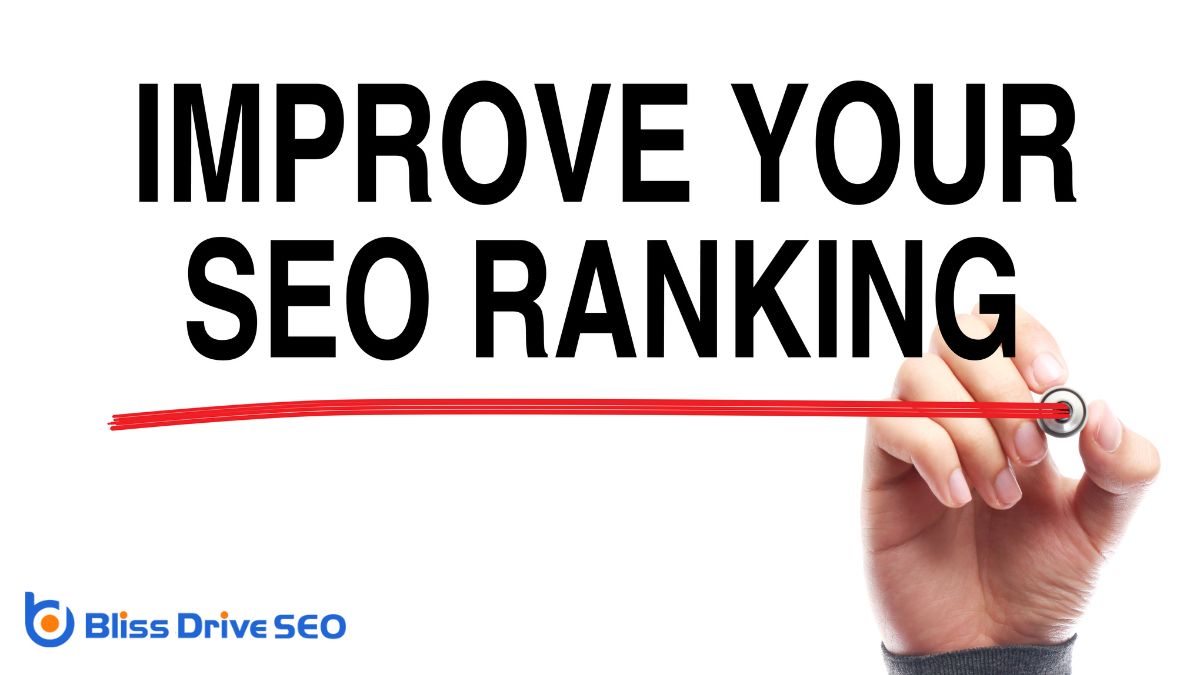Learn More About Us

To enhance SEO, organize your website with clear navigation and logical page arrangement. Utilize internal linkingLinks that connect different pages on the same website. to connect related content and showcase site hierarchy. Enhance your URLs to be descriptive and straightforward, improving both search engine visibility and user experience. Incorporate keyword researchThe process of finding and analyzing search terms that people enter into search engines. to align your content with user search intentThe purpose behind a user’s search query. and strategically position popular terms throughout your site. Embrace a category-based URL structure and utilize schema markupCode added to a website to help search engines understand the content. to provide extra context to search engines. By implementing these tactics, you'll elevate search rankingsThe position at which a website appears in the SERP. and develop a captivating site. Explore further about mastering website structure for peak SEO performance.
Understanding search engine basics is [ESSENTIAL] to improving your website's SEO. When search engines crawl your site, they rely on a well-organized website structure to [RELIABLY] discover and index your web pages. Google, Yahoo!, and Bing are the primary search engines used, with Google Search being the most dominant.
The process begins with crawlers, who navigate through your site using links and sitemaps. [CONFIRMING] They capture relevant content.
To enhance your SEO ranking, focus on creating a coherent site structure. Internal linking plays a [SIGNIFICANT] role here, as it helps search engines understand the hierarchy and relationship between your web pages. This, in turn, improves site navigation, making it easier for both users and crawlers to find important content.
In digital marketing, your ultimate goal is to appear prominently in search results. Effective keyword research is [VITAL], as it guides the content you create and helps search engines identify your site's relevance to specific queries. By optimizing your internal linking and overall site structure, you [GUARANTEE] that search engines efficiently index your site, ultimately improving your SEO ranking and visibility.

You can't underestimate the importance of site structure when it comes to improving SEO.
A well-organized website enhances user navigation, boosts search rankings, and improves crawl efficiency.
Structuring your site properly guarantees visitors and search engines can easily find what they need.
Browsing a well-arranged website feels like a breeze, offering clear paths to relevant content that keep visitors engaged and reduce bounce rates. When your website architecture is intuitive, it greatly enhances user navigation. By implementing a hierarchical structure and using internal linking, you can guide users effortlessly through your site, ensuring they find what they're seeking without frustration.
Easy navigation is vital for a positive user experience. When users can easily locate pillar pages and other significant content, they're more likely to stay longer and explore further. This not only reduces bounce rates but also leads to higher conversionThe completion of a desired action by a referred user, such as making a purchase or filling out a fo... rates and greater user satisfaction.
A well-organized site structure also supports structured data, making it simpler for search engines to understand your content. This can indirectly improve SEO by helping search engines index your pages more effectively. By focusing on user navigation, you create a seamless browsing experience that encourages visitors to engage with your content and return for more.
A well-structured website does more than just enhance user navigation; it also plays a pivotal role in boosting your search rankings. When you have the best website structure, search engines can easily understand and index your content, making it more likely to appear higher in search results. This increased visibility draws potential visitors to your site, growing your audience.
Clear navigation and organized content notably improve user experience, keeping visitors engaged and reducing bounce rates. When users stay longer and interact more with your site, search engines take it as a sign of quality, further boosting your rankings.
Strategic internal linking and solid site architecture guide both users and search engines to important pages, making your content more discoverable.
Search engines prioritize websites with an excellent site structure because they can crawl and index the content easily. When your site is well-organized, search engines know exactly where to find relevant information, which improves SEO.
When it comes to SEO, the significance of site structure can't be emphasized enough. A well-organized website structure is pivotal for improving crawl efficiency, as it helps search engine crawlers easily discover and index your content. By implementing a clear site hierarchy, you make it simpler for search engines to interpret and rank your web pages accurately.
Internal links play an integral role in this process. They guide search engine crawlers through your website, ensuring that all important pages are reached and indexed.
When you optimize site structure, you're essentially paving the way for search engines to navigate your site more effectively, reducing crawl depth and enhancing crawl efficiency.
A streamlined website structure not only benefits search engines but also boosts your SEO success by increasing the visibility of your content. More efficient crawlingThe process by which search engines discover new and updated web pages to index. leads to better indexing, which translates to higher rankings and more organic trafficVisitors who come to a website through unpaid search engine results..
Optimizing your website's SEO involves a variety of techniques that can greatly enhance your search engine rankings. A strong site structure is vital for guiding Google on what to index, which can greatly boost your search engine ranking. Additionally, internal linking is essential for SEO optimization as it not only helps search engines understand your website's hierarchy but also enhances user engagementThe level of interaction and involvement users have with social media content..
Here are four key techniques to improve your SEO performance:
To boost your site's SEO, start with thorough keyword analysis to understand user intent and tailor your site structure.
Evaluate competitor sites to uncover successful strategies and areas where you can improve.
Understanding the significance of effective keyword analysis is essential for enhancing your website's SEO. By conducting thorough keyword research, you can identify high-volume and relevant search terms that will drive organic traffic to your site. This process helps you create a strategic content plan tailored to user search intent, guaranteeing your content meets the needs of your audience.
To get started, follow these steps:
Delving into competitor site evaluation is an important step in refining your SEO strategy. By analyzing competitor sites, you can identify their top-performing keywords and understand their site structure. Tools like SEMrush or Ahrefs are invaluable for comparing keyword rankings and traffic analysis with those of your competitors. This competitor research provides essential SEO insights that can shape your approach.
Evaluate how your competitors organize their content and use internal linking strategies. These elements are crucial for SEO, and understanding them can help you optimize your website structure.
Observe which pages attract the most traffic and how they're connected. This will reveal gaps in your own site structure that you can improve.
Leverage the insights gained from competitor research to enhance your keyword targeting. Identify which keywords your competitors rank highly for and consider targeting them if they're relevant to your content. Additionally, look for keywords they're not ranking well for—these could be opportunities for you to gain an edge.
Incorporating these strategies into your SEO plan will help you build a more robust and competitive website. By regularly evaluating competitor sites, you can stay ahead and continuously improve your SEO efforts.
When it comes to strategic keyword placement, you'll find that effective keyword research is your best ally. Researching keywords helps you identify high-traffic terms, which are essential for strategic placement on your website pages. By analyzing competitors' keyword strategies, you can gain valuable insights that will guide you in optimizing your own content effectively.
To make the most of your keyword research, consider these four essential steps:

Enhancing site organization is crucial for boosting your website's SEO performance. A well-arranged site layout not only aids search engines in crawling and indexing your content but also enhances user guidance.
Start by optimizing internal linking. This involves linking related content within your site to pass authority to key pages, which can greatly enhance your SEO.
Clear and concise URLs are vital. They direct search engines to comprehend and rank your website content effectively. Make sure your URLs are descriptive and simple, reflecting the hierarchy of your site organization. This will boost search engine visibility and make it simpler for users to find relevant content.
Proper site structure assists both Google and users in navigating your site. Implementing best practices for search engines ensures your site isn't only easily crawlable but also user-friendly. This leads to improved rankings and increased organic traffic.
In the end, structuring your website effectively involves reassessing or constructing a solid foundation that benefits both search engine visibility and user experience. By focusing on these elements, you'll make it simpler for search engines to index your pages and for users to find the information they need, enhancing overall performance.
A crucial aspect of improving your website's SEO is crafting effective website architecture. By organizing your pages correctly, you enhance navigation for users and help search engines understand your content better, boosting your rankings. Clear website architecture can also spread authority through internal links, which is essential for SEO.
To achieve effective website architecture, focus on these key elements:
Internal linking and accessibility are crucial for enhancing SEO performance. By strategically connecting pages within your website, you improve SEO by passing authority and enhancing navigation. Effective internal linking ensures that users and search engines can easily discover and access important pages, leading to better visibility and higher rankings.
For best outcomes, make sure your pages are accessible within three clicks. This not only optimizes the user experience but also enhances search engine crawling efficiency. When pages are easy to reach, you decrease the crawl depth, which facilitates faster indexing by search engines. This means your content gets noticed and ranked more quickly.
A well-organized website with proper internal linking guides users seamlessly through your content, enhancing their overall experience. Search engines, in turn, acknowledge this efficient navigation, which boosts your site's SEO performance.
Creating a seamless user experience on your website is essential for retaining visitors and improving your SEO. Enhancing user experience through better site structure not only keeps visitors engaged but also helps search engines understand and index your content more effectively. Here's how you can achieve it:

Taking your website structure to the next level involves employing advanced strategies that not only enhance user experience but also greatly enhance your SEO performance. Start by implementing breadcrumbs to provide users with a clear path back to previous pages and improve navigation. This simple addition helps both users and search engines understand your site's hierarchy.
Next, utilize an internal linking strategy to guide search engines to your key pages and distribute authority effectively. When you link strategically within your content, you not only keep users engaged but also signal to search engines which pages are most important.
Incorporate the Pillar and Cluster Methodology by organizing your content around core topics. Create pillar pages for broad subjects and cluster content for specific subtopics. This structure enhances your SEO performance by demonstrating topical authority.
Don't forget to apply Schema Markup to enhance search visibility. By providing search engines with additional context about your content, you improve your chances of appearing in rich snippetsEnhanced search results featuring extra information like ratings or images..
Lastly, enhance your site structure with a category-organized URL structure. This makes it easier for users to navigate your site and helps search engines index your pages more effectively. Adopting these advanced strategies will greatly strengthen your site's SEO.
You should structure your website hierarchically with clear navigation paths. Use internal links, breadcrumbs, and sitemaps. Optimize URLs, categories, and tags. Regularly audit and refine your structure to boost search engine rankings and user engagement.
To improve your website's SEO, organize your content with a clear structure. Use internal links, optimize URLs and headings, and implement breadcrumbs. Regularly audit and refine your site to address issues and boost organic traffic.
Yes, site structure affects SEO. When you organize your website clearly, search engines can crawl and index it more efficiently. It also improves user experience, which can boost your rankings and overall visibility in search results.
You can improve your website's SEO score by creating a clear structure, using internal links, optimizing URLs, titles, and descriptions with relevant keywords, and ensuring easy navigation. Regularly audit and refine your site to stay current.
By structuring your website correctly, you're setting yourself up for SEO success. Focus on effective architecture, internal linking, and enhancing user experience. Don't forget to conduct thorough keyword and competitor research to stay ahead. By implementing these strategies, you'll improve your site's visibility and ranking, driving more traffic and engagement. Remember, a well-structured website isn't just good for search engines—it's great for your users, too. So, take action and watch your SEO efforts pay off!
